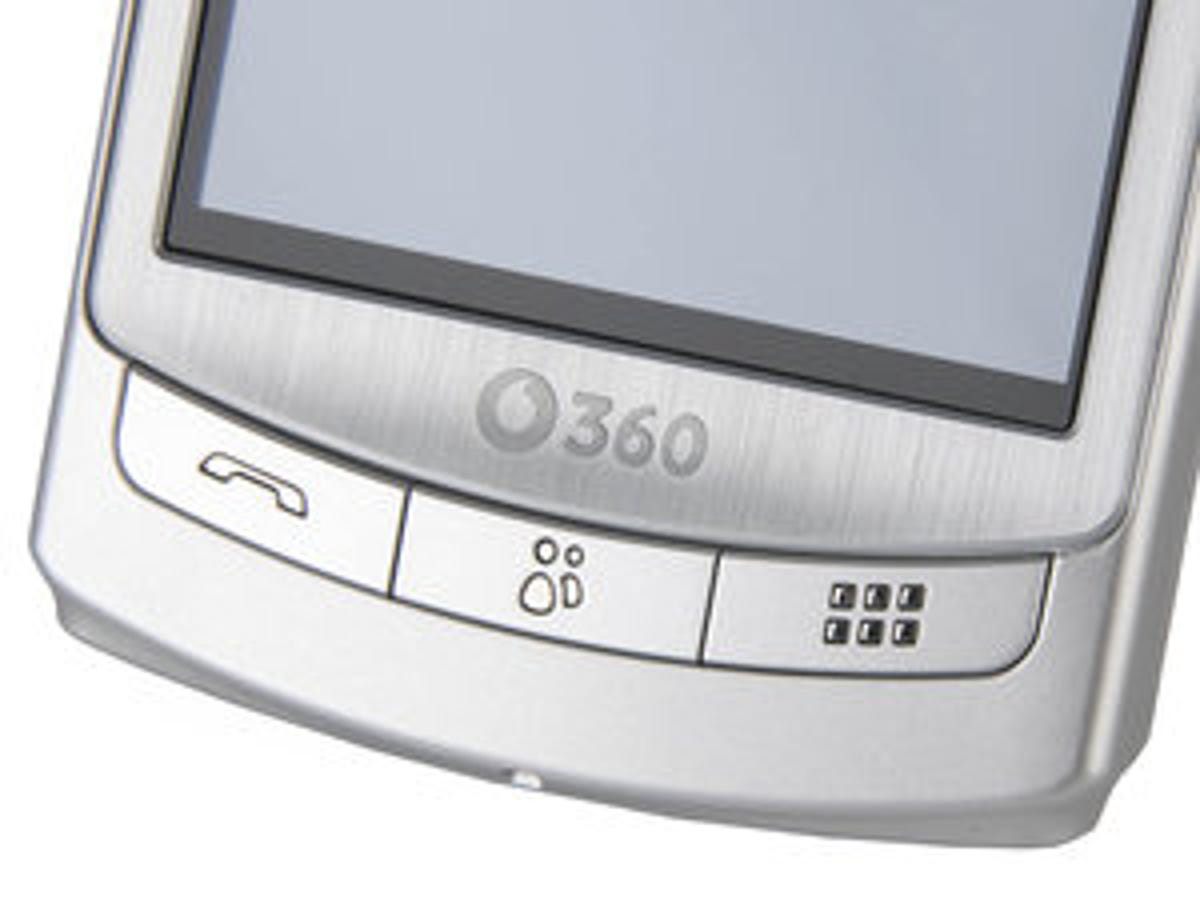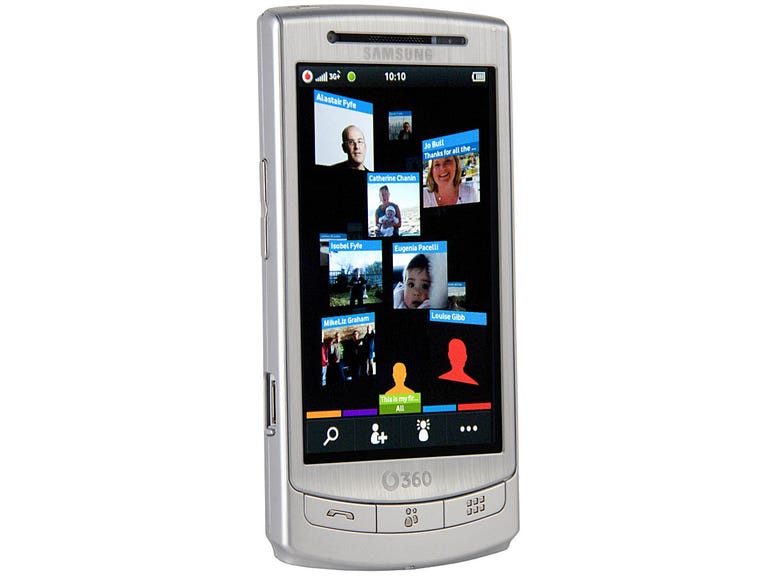 Why You Can Trust CNET
Why You Can Trust CNET Vodafone 360 Samsung H1 review: Vodafone 360 Samsung H1
Built around the Vodafone 360 service and sporting an innovative, contact-centric user interface, the Samsung H1 may well be just the ticket for social-networking fanatics. This handset takes a while to get used to but it's packed with features, not least a capacitive touchscreen, and speedy Wi-Fi and 3G connectivity
Reinventing the wheel is generally considered a bad thing, but Vodafone and Samsung have had a go anyway. The result is the Vodafone 360 Samsung . We have to applaud the fresh, social-networking-focused user interface, but it left us slightly dazed and confused. This isn't just a phone -- it's a vehicle for the whole Vodafone 360 service, and you'll have to get all your friends on-board to get the most mileage out of it.
The Good
The Bad
The Bottom Line
The is available exclusively with Vodafone, from free on a £35-pound-per-month, 2-year contract.
Full 360
The Samsung has been built for the free Vodafone 360 service. Like a biscuit and
a cup of tea, they're fine independently, but they're best when served together. In other words, unless your friends use Vodafone 360, you won't
be able to get the most out of the , but, even if you can't twist their arms
and get them on-board, it's still a phone worth having.
The offers an innovative user interface based around your address book, rather than a traditional home screen covered in alerts and icons. The phone has three buttons beneath the screen, but they aren't the usual fare for making and ending calls and so on. Instead, they launch the three main areas of the phone's user interface -- events, contacts and apps. This system can take some getting used to. But, if you're willing to clear your mind of questions, Jedi-style, and you love social networking, the offers a fresh way for you to keep up-to-date with your peeps.

When you unlock the phone with a swipe of a finger on the capacitive touchscreen, the first screen shows little cards with your contacts' pictures and names, pulled from the phone's address book or your Facebook account (it also shows their Facebook status). The cards appear to be floating around on the screen, and swiping up and down shows more of them, while swiping left and right shows groups of contacts, such as friends or family. It's a fun system, but, once the fun's worn off, you're likely to resort to the search function, group and list view simply because of their practicality. Happily, all of these are easy to access and use. You can also organise your contacts on the Vodafone 360 Web site.
Once you've found the person you're interested in, a tap on their smiling face brings up a menu so that you can quickly text or ring them. Alas, several of the menu options, such as sending your location, only work if your friend is also using Vodafone 360. We also found the user interface confusing at times. It isn't always clear what each icon represents, and there aren't many text labels to help.
The phone's behaviour is unpredictable at times, too. For example, we attempted to send an MMS message to a contact without a phone number in our address book. Instead of alerting us to the problem, or not offering MMS as an option, the sent it to their email address instead. It's not a bad solution, given the circumstances, but we'd rather be told whether we've messaged or emailed someone.
Also, it may be that our friends don't update their Facebook status often enough, but we didn't always find it helpful to have such information put front and centre every time we looked at the phone.
Apptitude
The handles applications differently from other phones too, merging apps with
menu options in one big grid of icons, which you can see by pressing the button on the far right of the phone's front. We like this feature, since it means that you don't have to go trawling through menus to get to the camera or music player, for example. We also like how some apps have expanding icons, so you can
see live news feeds and Twitter updates without opening the relevant app, for example.
You'll have to stay organised, though, since everything's in one place. It doesn't help that you can only delete apps that you've
installed yourself. Vodafone has included a fairly random bunch of apps that we could quite happily live without,
including games and an app that keeps you updated on the antics of the Vodafone McLaren Mercedes F1 team.
If you do want to grab some apps of your own choice, you can use the Vodafone 360 game and app shop, either on the phone or the Web. There's a decent collection of apps there, but we don't like the fact that it's difficult to tell whether apps are free or paid-for until you've selected the detailed description. For us, this information is a deal-breaker when selecting apps, so the sooner we have it, the better.
LiMoFo
The is the first phone we've tested that uses the LiMo (Linux
Mobile) operating system, but it's been so heavily customised to accommodate Vodafone 360
that we bet you won't notice it at all. Still, it's an interesting factoid if you're
into mobile-phone operating systems. But maybe that's just us.
The phone doesn't struggle to get tasks done, but we occasionally found it paused to have a little think if we started tapping too quickly. In a couple of instances, this sluggishness can be annoying. The on-screen keyboard isn't responsive enough for our fastest typing speed, for example, although, at slower speeds, it proved accurate, with good predictive-text capability. The applications screen also suffered as a result of the sluggishness. We found we sometimes accidentally opened apps while trying to scroll from right to left. The situation isn't unbearable, but we found we needed to proceed slowly and deliberately to get things done.
Feature creature
The social-networking features take pride of place, but there's much more to the
. It's got a bright, beautiful, 89mm (3.5-inch) touchscreen, 16GB of built-in
memory and every wireless connection under the sun -- Wi-Fi, HSDPA for faster
downloads over 3G, and Bluetooth.
There's a 5-megapixel camera with an LED photo light too, and it did a decent job in our tests. Although photos weren't as sharp as they could have been, colours were natural and the LED light did a good job of illuminating dark shots. We'd be happy to whip out the to capture some candid photos or a passing celebrity.
We also like the 's good old-fashioned call quality. In our tests, calls were clear and loud, and the phone proved comfortable to use.
Conclusion
We like how the Vodafone 360 Samsung shows contacts in a new
way -- not to mention its vivid screen and good connectivity -- but this
phone puts you on a steep learning curve. If your friends and contacts are key to your existence, it may be
worth investing the time to get to know the , especially if they're using Vodafone 360 too. Otherwise, you may want to spend your time getting to know
more friends, rather than trying to understand this handset.
Edited by Charles Kloet
